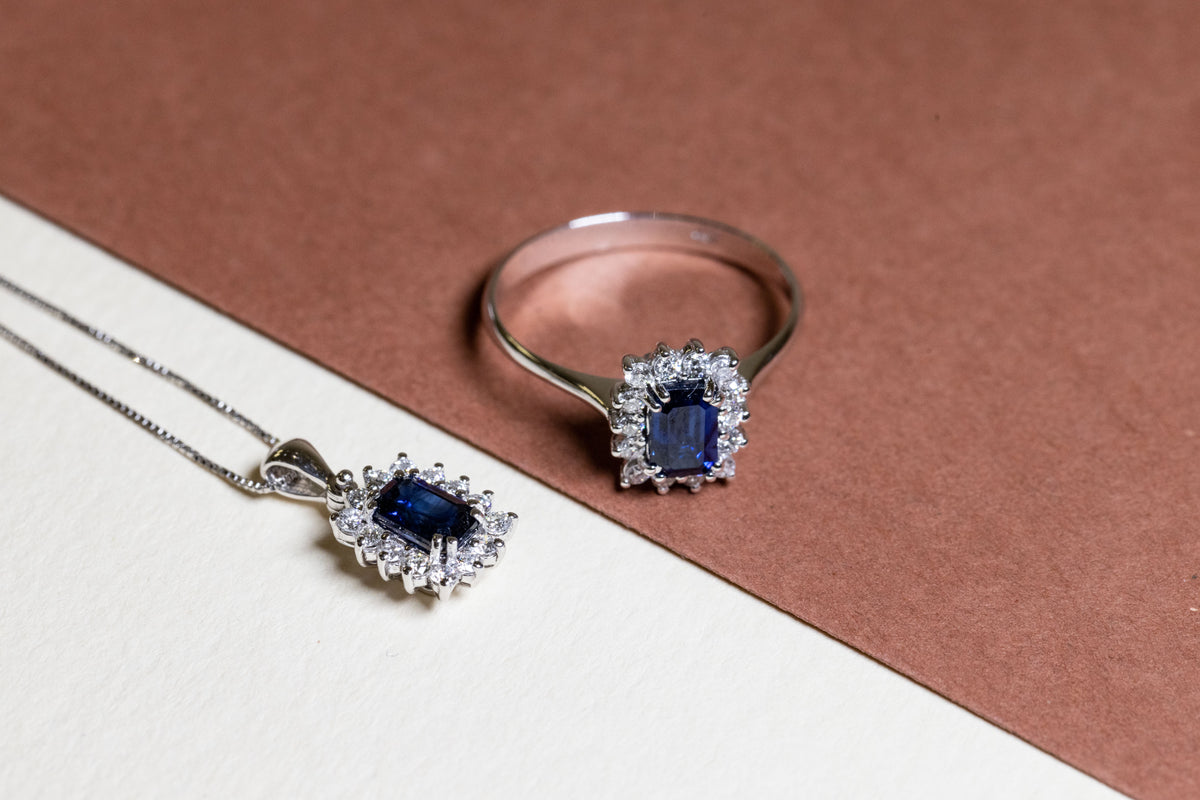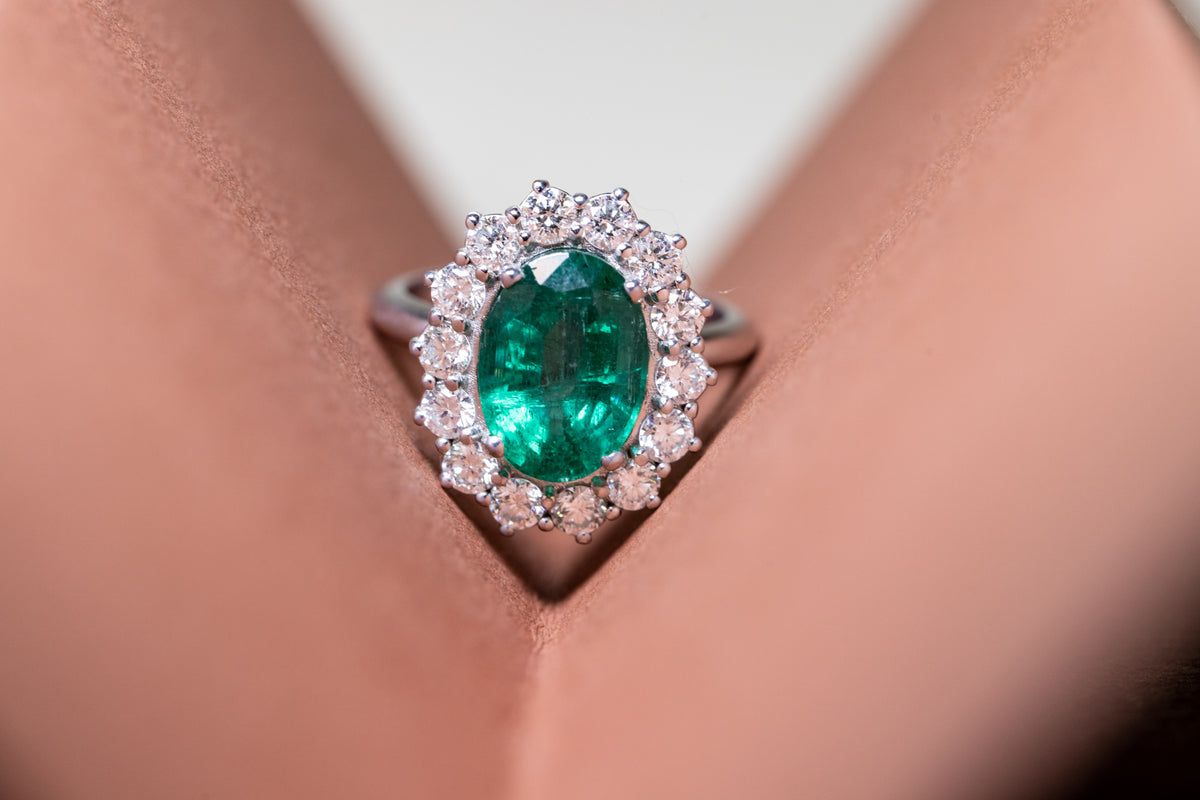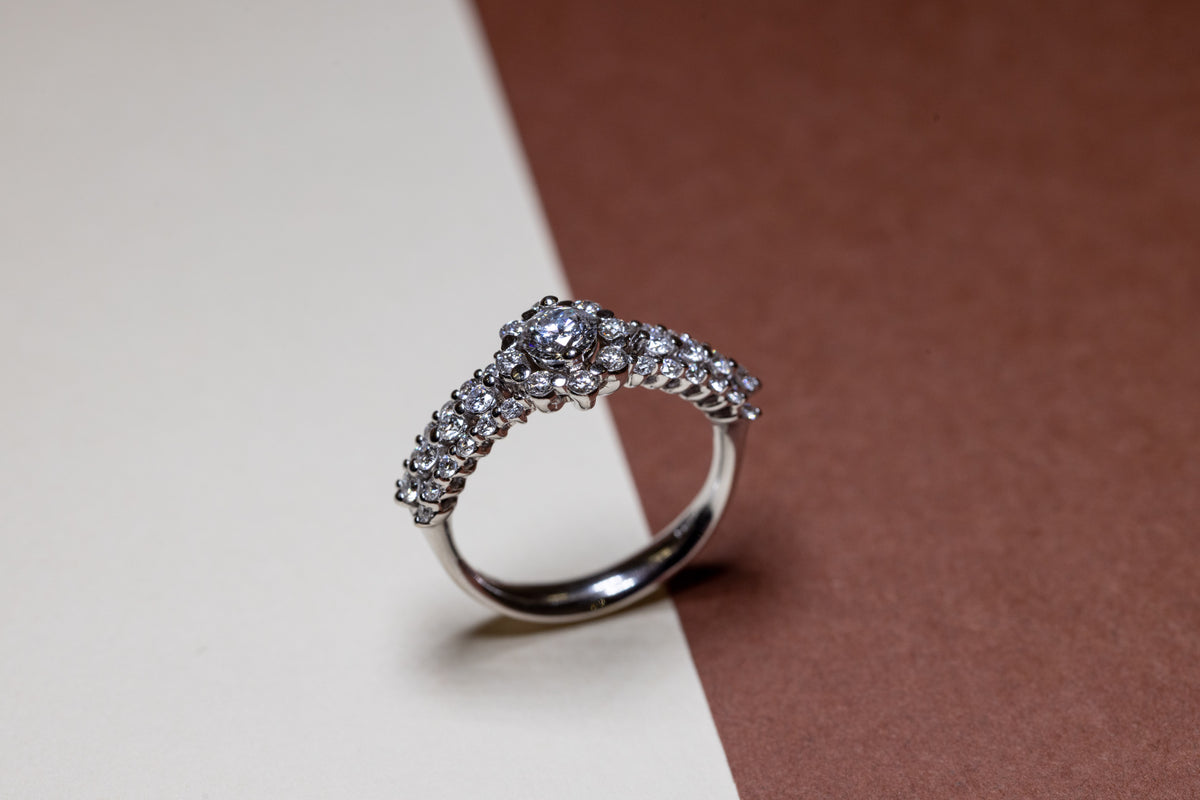Among the gems of gems
Contrary to popular belief, diamonds are not the most expensive objects in the world.
Among the things that they can actually buy, the diamond “shines” not only for the light it manages to reflect, but also for its cost.
That these gems are expensive is not news, nor is it a surprise.
In order to understand the order of size of the purchase price of these small crystals, however, some premises must be made.
First, the most expensive diamonds are not the colorless ones, but the so-called fancy ones, which can be pink, green, blue, etc.
Second, many of the most valuable gems are privately traded and their values are generally not made public.
Those who hang around in the industry know that some of these gems can reach or even exceed 7 million per carat.
Generally these are stones of very high quality (purity, colour, cut and carat) but recently extracted.
If diamonds with a historical past were put on the market, such as the “Hope” or the “Dresden”, to name a couple of well-known names, the figures achieved could be even higher.
It is also well known that there is no written and immutable directive that determines the price of these gems, other than that which regulates trade in general, that is, the law of supply and demand.
This invisible rule is typically established by the contingent economic situation, the tastes and purchasing possibilities of potential buyers.
In other words, every stone has its own story.
To this we can add the fact that perhaps, some of the most prominent diamond collectors, perhaps with a hint of vanity, challenge each other with millions: managing to make people talk about you by paying record sums is a whim that not everyone can afford.
To get an idea of the amount of money needed to own one of these miniature investment pieces, it is useful to turn your attention to auction houses.
At special events held in Geneva, Hong Kong or New York (and many other cities), sessions are regularly held offering luxury items for mind-blowing sums.
Among the refined pieces that go under the hammer, it is precisely the famous fancy ones that often attract the attention of the wealthiest collectors.
Until the 1990s, colored diamonds were practically a curiosity and only occasionally appeared at auction evenings organized by names such as Sotheby's or Christie's.
Since then, thanks to Argyle's publicity, the dismemberment of the single market led by De Beers and the multiple socio-political events that have hit the planet, the prices of these gems, in step with their popularity, have been gradually, continuously and steadily increasing.
Over the last decade, as a result of a combination of these factors, we have seen record after record being broken.
Every year, someone pushes the sky-high prices of these gems a little higher.
Record-breaking gems
Diamonds that have a visible chromatic aspect (that is, those outside the GIA DZ scale) and that have a pure dominant hue, without secondary shades, are the most sought-after and most valuable.
If tone and saturation are appropriate (usually medium the former and high the latter) the number of zeros in the price tag goes up significantly.
This is evident from the GIA classification, which divides these gems into nine categories (although not all colors have all levels) such as “ Faint, Very Light, Light, Fancy Light, Fancy, Fancy Dark, Fancy Deep, Fancy Intense and Fancy Vivid ”.
Looking at the famous gems, one can notice that it is the Fancy Intense and Fancy Vivid class ones that generally command higher prices.
Every little bit of brown or gray on the certificate can lower the price of a fancy stone by ten times or more.
Of all the colors available for diamonds (there are 27 primary ones), some are more sought after than others: pink, blue and yellow are currently the ones that most frequently capture the attention of jewelers and buyers.
Below is a simple list of the stones that required the greatest financial effort (in US dollars) to purchase:
Most expensive: The 59.60-carat Pink Star (Fancy Vivid Pink), sold at a Sotheby's auction for $71.2 million to Chow Tai Fook Enterprises in 2017.
The most expensive pink diamond per carat: the Pink Legacy (Fancy Vivid Pink): 18.96 carats (interestingly, removing the comma gives the year of birth of M. Harry Winston), “sold” in 2018 for 49.9 million dollars (about 2.6 million USD per carat).
The 14.62-carat Oppenheimer Blue (Fancy Vivid Blue), which for a few years held the record for the most expensive diamond ever sold, fetching $57.5 million at a Christie's auction in Geneva in 2016.
The 100.09-carat Graff Vivid Yellow (Fancy Vivid Yellow) diamond was generously sold for $16.3 million in 2014 at an auction in Geneva.
The Aurora Green (Fancy Vivid Green) has become the most expensive green diamond ever sold at auction. The 5.03-carat gem was snapped up by Chow Tai Fook in 2016 for $16.8 million (over $3.3 million per carat).
The Orange (Fancy Vivid Orange), a 14.82-carat orange diamond that was sold for $36 million in 2013 (about $2.4 million per carat).
At 5.11 carats, the Moussaieff Red (Fancy Red) is the largest pure red diamond ever found. The stone is owned by the company that gave it its name, of Israeli origin but based in London, which purchased it back in 2002 (price unknown).
The highest value red diamond known is the Hancock Red (Fancy Red), weighing 0.95 carats.
At the time of its sale in 1987, it was the most expensive material, per carat, ever sold at auction.
The hammer actually fell to $880,000, or $926,315 per carat, eight times its pre-sale estimate.
Fancy Reds are truly special stones, in fact, according to the Cape Town Diamond Museum, only 20 to 30 examples have been discovered in the world so far and most of them weigh less than 1/2 carat.
Colorless diamonds (for comparison):
A D color (GIA scale) diamond called " the 101 ", due to its weight of 101.73 carats and its pear shape, was sold at Christie's for $26.7 million in 2013, or about $262,000 per carat.
The Blue Moon Josephine
If the numbers above don't make your head spin, perhaps the highest "official" price ever sold for a diamond, the Blue Moon Diamond, might cause a little swooning.
This tiny crystal, weighing just over 2 grams, was presented in 2015 at a Sotheby's auction in Geneva for the incredible sum of $48.5 million, or over $4 million per carat!
It was snapped up by 64-year-old Hong Kong real estate tycoon Joseph Lau Luen Hung (Chinese: 劉鑾雄).
The Asian billionaire has a fortune estimated by Forbes at 17.4 billion dollars (as of July 2020), a “booty” collected, not without controversy (he still has legal problems in Macao) through shrewd investments in the real estate sector.
This is not the first time that the “Hong Konger” has bought some jewels to dedicate to his family members.
Just the day before, in fact, she had bought a 16.08-carat pink diamond for $28.5 million, promptly renamed “ Sweet Josephine ” again for her little girl, whose real name is, in reality, Lau Sau-wah.
Her love for these exceptional gems seems to have its origins in 2009, the year in which she decided to spend $9.5 million on another blue diamond.
On that occasion, Lau bought the small crystal to celebrate the birth of her daughter, for whom the stone was named " Star of Josephine ".
For another daughter, Zoe, he had previously “indulged” in some other gems.
In November 2014, at a Sotheby's auction, she fetched $32.6 million for a 9.75-carat blue stone, then known as the “ Zoe Diamond ,” and a Cartier brooch set with a 10.1-carat ruby, soon to become known as the “ Red Zoe .”
The jewel was obtained for the modest sum of 8.4 million dollars at Christie's.
The history of stone
The Blue Moon was found in 2014 in the Cullinan mine (formerly known as Premier), a few kilometers from Pretoria, South Africa. The original rough crystal weighed 29.6 carats, so, to obtain the 12.03 carat faceted gem, over half of this very precious material, as often happens, was eliminated during the modeling stage.
One wonders how the famous diamond workers organize themselves to work with gems of such high value; handling such small and precious objects is not something for the faint of heart.
Consider that one hundredth of a carat of this stone, a quantity practically invisible to the naked eye, costs around 40,000 dollars.
For this reason, before being able to “dare” to touch this tiny blue stone, a long period of study is necessary.
The elaborate analyses of the stone's structure and colour were entrusted, as usual, to teams of super experts who, with the help of the most advanced technology, established how to proceed.
After five long months spent observing the rough stone from every possible angle, the master diamond cutters catalogued its shape, inclusions, colour zones, directions of hardness etc.
Subsequently, they created 30 synthetic replicas, exactly identical to the natural gem, on which they performed a series of experiments.
To understand which cut would lead to the best final result.
Maximum importance was given to the uniformity and intensity of the chromatic aspect, especially that which appears when the gem is viewed face up.
Preserving the highest amount of weight was also, as usual, a vital factor.
Furthermore, it was evaluated how inclusions, microscopic internal defects, could impact the beauty of the Blue Moon.
All these considerations were made simultaneously, playing on those complex relationships that translate, once the work is completed, into the famous “4Cs” created by the GIA (the Gemological Institute of America).
These four standardized quality measures have been used throughout the world for years to evaluate the price of diamonds using measurable characteristics.
The final product, the Blue Moon Josephine in its definitive form, was the ideal combination of this myriad of parameters, one that led to the creation of the highest value joy.
The model gems were first marked, inclusions mapped and then removed through the lengthy process, and different cutting styles were experimented with.
Only once the results on the artificial copies of the stone were compared, it was decided to cut the real one.
It took a full quarter for the crystal to be faceted by a team of cutters of the highest pedigree.
The final result was the fruit of a harmonious combination of complex mathematical calculations and aesthetic values.
Throughout the time it took to complete the work, observers, scientists and lapidaries continued to communicate with each other to share ideas, doubts and strategies.
After all this process, the resulting gem was a GIA graded, cushion-cut, 54-facet fancy vivid blue diamond with VVS2 clarity.
The Blue Moon was later loaned for analysis by the Smithsonian Institute.
The important organization studied its optical and chemical aspects, focusing its attention on the gem's phosphorescence.
Once this phase was completed, the stone was placed on display at the Los Angeles Museum of Natural History.
Some final considerations
Because of their enormous value, many fancy diamonds are not faceted as colorless diamonds are, although great care is still taken with them.
Before they can be placed on the market, these rare crystals are analyzed, X-rayed and studied, becoming the focus of the thoughts of the world's most expert lapidaries for months, if not years.
A prime example of this laborious process is provided by Blue Moon Josephine, who had to follow this very path in order to obtain the most expensive gemstone crown ever.
Just seeing one of these gems is difficult, owning one is…for the rich.
Article by: Dario Marchiori
Sources: theguardian.com, Irfaan Hassan Diamonds, Wikipedia, fastquicksearch.com, telegraph.co.uk, straitstimes.com, worthly.com, naturallycolored.com, celebsagewiki.com, macaubusiness.com, diamtrader.net



